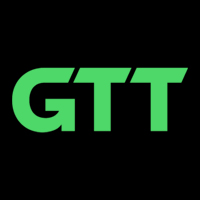How can we help?
Whether you're looking for expert ITSM consulting, cutting-edge technology solutions, award-winning training courses, or hands-on IT support, explore our website and use the search box to easily find the resources, insights, and services you need.
Target Operating Model
A target operating model (TOM) is the future blueprint for an organisation’s people, processes and technology to successfully deliver on its vision and the desired customer experiences. It is a high-level representation of how an organisation can be best organised. This allows it to more efficiently and effectively deliver and execute on its strategy.
Transform Your Operating Model
Transform how your organisation operates by aligning people, processes and technology to execute strategy with maximum impact.
In addition, it provides a common understanding of the organisation by allowing people to visualise the organisation from a variety of perspectives across the value chain. This occurs as every significant element of activity is represented. Moreover, people, process, and technology are key components underpinning any TOM and are critical to ensuring its success. Ultimately, designing a TOM involves creating an organisational blueprint for the structure, processes, and resources necessary for an organisation to achieve its strategic objectives, using a target operating model as the foundation.
Approach
Our Target Operating Model Approach
Define the Vision and Objectives
Assess the Current State
Design Key Components
Develop Implementation Plan
Monitor and Refine
- Define the Vision and Objectives: determine the long-term vision of the organisation. Establish clear strategic objectives that the TOM aims to support.
- Assess the Current State: analyse the existing operating model. Identify gaps between the current state and the desired future state based on a target operating model.
- Design Key Components
- People: define required skills, competencies and cultural attributes.
- Processes: map out and optimise the core processes to fit the target operating model.
- Technology: identify all necessary technology and systems
- Organisational Structure: define roles, responsibilities and reporting lines.
- Governance: establish decision-making frameworks and compliance measures.
- Develop Implementation Plan: create a detailed roadmap with timelines, milestones, and resource allocation. Test the new model in a controlled environment, aligned with the target operating model.
- Monitor and Refine: set KPI’s to measure success and establish mechanisms for ongoing monitoring and adjustments to drive continuous improvement.
Benefits
- Strategic Alignment: A TOM provides a clear framework that aligns your operations with its strategic objectives. Consequently, it ensures consistency in how strategic initiatives are executed across different parts of the organisation.
- Operational Efficiency: A TOM streamlines processes and optimises resource utilisation to achieve maximum productivity, particularly when following a target operating model structure.
- Improved Customer Experience: by focusing on customer needs and preferences, a TOM helps improve the overall customer experience. It ensures consistent delivery of high-quality products and services.
- Cost Reduction: reducing redundancies and inefficiencies, streamlined processes and optimised resource allocation lead to significant cost savings.
- Improved Decision-Making: designing a TOM establishes clear governance structures and decision-making frameworks. In addition, the analytics and reporting mechanisms that a TOM includes, provide data-driven insights that support informed decision-making based on a target operating model approach.
- Innovation Enablement: designing a TOM includes leveraging new technologies and drives digital transformation and fosters a culture of continuous improvement.
Case studies

Growth powered by Pink Elephant’s SIAM IT Service Desk
Corplex (formerly DS Smith Plastics, Extruded Products) is a leading manufacturer of innovative reusable packaging. With a history spanning 50 years, Corplex rebranded in 2020 after being acquired by Olympus Partners. The company is dedicated to sustainability and excellence, establishing itself as a trusted name in the Reusable Transport Packaging...

Bespoke Customer Service training programme for GTT
Pink Elephant EMEA builds on the success of a GTT’s customer service offering with a bespoke virtual training programme. Find out more below about the objectives, challenges, and successes of delivering a training programme to 250+ GTT employees, in three countries, across three time zones. Find Out More about Customer...

AON optimises ITSM and UX
Aon PLC, a leading British-American multinational professional services firm, offers a wide range of financial risk-mitigation products, including insurance, pension administration, and health insurance plans. To continue delivering exceptional service across its global operations, Aon sought to transform its IT Service Management (ITSM) practices and enhance the user experience. The...